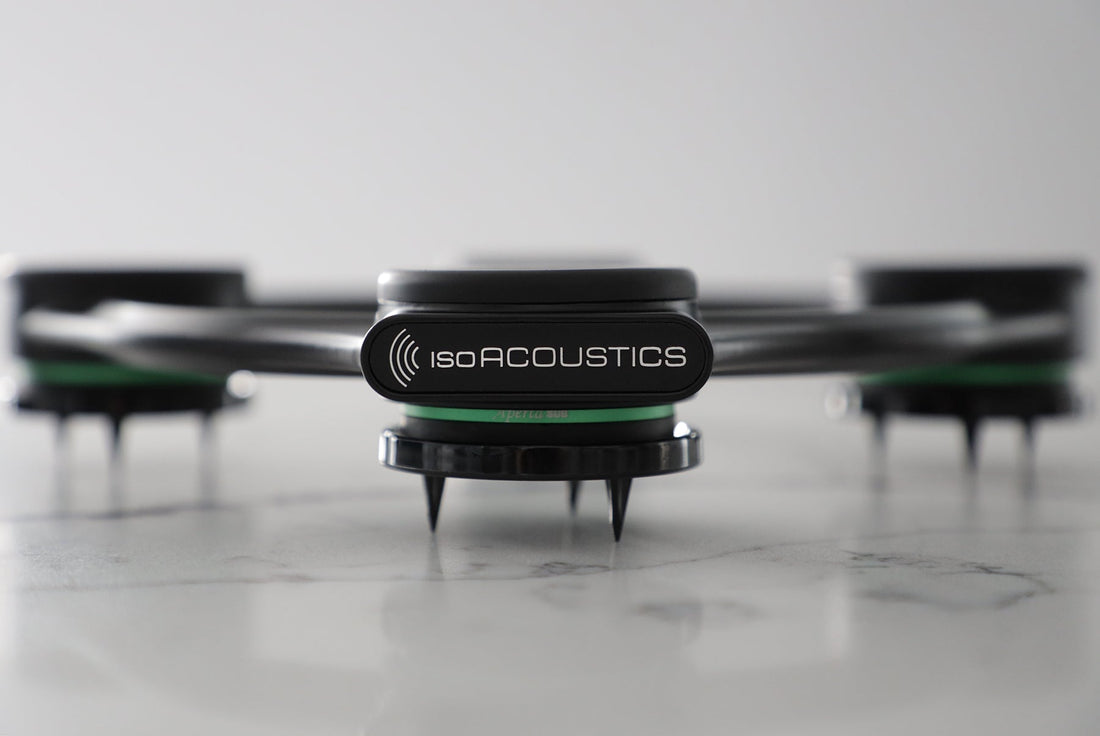Next up for this photo column are a collection of vibration management products from IsoAcoustics, located in the Canadian city of Markham, Ontario. I used the company’s footers, stands, and a platform in one of my moderately priced A/V systems that consists of a Marantz receiver, Polk Audio speakers, and entry-level Audience cables and power cords. The IsoAcoustics products in the system were the company’s zaZen II component platform ($230), OREA Bronze and Graphite footers ($50 and $45 per piece, respectively), ISO-130 speaker stand ($100 per channel), and Aperta subwoofer stand ($150).

Here's a trio of IsoAcoustics OREA footers.
When it comes to vibration management, there are there are many ways to Rome, each of which seems to employ different design theories and materials choices. As the science behind these choices can be complex, brand and product selection can become confusing for many audiophiles.
Let’s take IsoAcoustics’ approach to speaker optimization. The company’s speaker isolation stands use a high-quality, degradation-resistant synthetic elastomer to connect the bottom of a speaker’s cabinet to the supporting structure, thus creating a suction cup effect on smooth surfaces and a strong grip on textured ones. Once the surface connections of are established, harmful vibrations are said to be managed by a proprietary system of internal isolators. Of course, other vibration management products, for example, create a completely metal pathway by which vibrations are said to be shunted away from the speaker before they can allegedly damage the speaker’s performance. IsoAcoustics GAIA Series speaker isolation footers do have a threaded portion like other speaker spikes or isolation feet, but there the similarity ends, as the GAIA footers employ a proprietary isolation structure.
During my testing, the IsoAcoustics products dramatically improved the sound of my audio system. In fact, I can’t dispute any of the claims made on the company’s website of cleaner bass and improved soundstage, imaging, openness, and clarity. As a bonus for yours truly, they were great fun to photograph.

An Aperta loudspeaker stand, one of three available Aperta models.

The zaZen II component platform measures 17 by 15 by 1.2 inches and can support a weight of up to 25 lbs.

Another view of an OREA isolation footer.

IsoAcoustics offers a variety of isolation products for components and loudspeakers.
Header image: IsoAcoustics Aperta subwoofer isolation platform. All photos courtesy of Howard Kneller.
Also note FTLC’s growing FTLC’s social media ecosystem, including its Facebook page (https://www.facebook.com/profile.php?id=61556741638528) and group (https://www.facebook.com/groups/217745678009888), the latter where members from around the world show off their gear; plus its LinkedIn (https://www.linkedin.com/in/howard-kneller/), Instagram (www.instagram.com/howardkneller/), Threads (www.threads.net/@howardkneller) and X (www.x.com/HowardKneller) pages.


